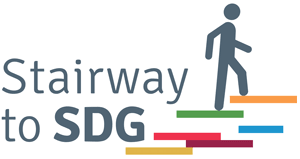Introduction

Empty bottles after a party. (By @rosssneddon on unsplash.com)
Alcohol consumption among adolescents is a very common practice. The elaboration of this project will focus on the moderation of alcohol consumption, advocating that for moderation to be successful is necessary to create self-awareness strategies. There seems to be a relationship between risk perception and alcohol use: young people who perceive alcohol consumption as low-risk behaviour tend to consume more alcohol (Lundborg & Lindberg, 2002; Patterson, Hunnicutt & Stutts, 1992). The sporadic consumption of alcoholic beverages tends to be seen, by students, as a behaviour that does not carry any risk (Fonte, 2003). And the regular consumption is defined as consumption with moderate risk. These data allow us to realize that alcohol is not rarely seen by students as a harmless substance if consumed sporadically. They are also aware that alcohol consumption has risks; however, they generally feel invulnerable to them (Wolburg, 2001). The activity consists in gathering the learners’ personal knowledge on the subject through a discussion, then a role play activity is proposed to introduce the concept and practical application of responsibility and conscious consumption. Then, the focus goes to the learners’ relationship with alcohol, and a simple survey is conducted in the educational centre. Lastly, the learners will create and realize an awareness campaign on 10th July (World Alcoholics Anonymous Day).
Learning Objectives
- The learner understands the importance of mental health. The learner understands the negative impacts of behaviours like xenophobia, discrimination and bullying on mental health and emotional well-being and how addictions to alcohol, tobacco or other drug
- The learner is able to encourage others to decide and act in favour of promoting health and well-being for all
- The learner is able to include health promoting behaviours in their daily routines
- Self-awareness competency
- Critical thinking competency
- Strategic competency
Instructions
|
Step 1) Understanding risks and rules of alcohol (60 minutes) The teacher introduces the activity by asking learners their personal knowledge and opinions about alcohol consumption by asking questions like:
The answers given by the class to these questions must be written on a sheet of paper by one learner or by the teacher for the following activity. The teacher must filter the answers and elaborate a new question, like: “most students think drinking alcohol is bad”, “most student feel peer pressure to drink”, “most students drinks to be accepted”. At this point the students must create 3 posters with the following words: 1- Agree; 2- Disagree; 3- Not sure. Then the students will place these posters on the wall in the classroom. Then, the teacher will read out loud the answers to the questions above that learners gave before. The students will choose, for each sentence, one of the three posters, write it there and afterwards voice their expectations and beliefs about alcohol consumption in a group discussion. Finally, the phrases written on the “Not sure” poster should be clarified by the teacher. Step 2) What can I do about it? (60 minutues) The students are here confronted with a problematic situation related to alcohol consumption and are asked to adopt the correct behaviour to try and solve the situation. They are challenged to recreate social dynamics related to alcohol consumption by means of a role play. The class is divided in groups of 3-4 members that will assume the different roles or characters such as:
These roles can be assigned randomly or chosen by the learners. The students will have to prepare a short story/social dynamic with themes about alcohol consumption. They can build sketches and scripts, if they need it. At this point, the groups can recreate scenarios related to alcoholic drinks purchase, acting according to their role in a way that prevents or stops the underage teenager to buy and consume alcohol, the adult to be responsible, the policeman to not only sanction but also inform and the shop assistant not to sell rather than facilitating alcohol abuse. Step 3) Your consumption and mine (120 minutes) Students are asked to take notes of their average consumptions on a daily and weekly basis, realizing a personal simple table with each one’s data (that will include frequency, quantity and type of drinks consumed). Next they will divide in 4 groups to go around the educational centre and possibly in the streets close to it, in order to interview people about their drinking habits and collect their data in accordance to the simple table previously described. Finally, the teacher will show video 1, asking to pay particular attention to the limits of safe consumption given. Students will be asked to distinguish cases, amongst the data collected, of people who drink moderately and people who abuse of alcohol and to establish if more people are drinking moderately or are abusing. At the end, open a discussion on the causes that lead to an abuse of alcohol and the main consequences of this habit. Why do people only abuse alcohol ? How do they go from a use to an abuse of it? What causes can you have in your personal and professional life? - CALL TO ACTION 1 In relation to the results of point 3, the teacher announces that it is important to share awareness about risks of irresponsible alcohol consumption and therefore the students are challenged to create an awareness campaign that coincides with the World Alcoholics Anonymous Day on 10th July. During the campaign, students can share phrases, pictures on an instagram channel or create a video of everything they learned in class. The teacher can share video 2 to give learners some inspiration. - CALL TO ACTION 2 The students must develop a final campaign in school to promote awareness on moderation and inform on alcohol consumption. The students are in charge of creating posters with informational messages and spread them around the school, as well as carry a 1-day activity, where they will demonstrate to the rest of the school (same group of age) everything they have learned from the project, talk about their experiences, alert to the dangers of alcohol consumption and talk about strategies that they learned. |
Notes for Educators
|
Estimated Total Duration: 4 hours + Call to Action
It is important to create empathy with the learners and show them support regardless of their thoughts about alcohol consumption but also explain to them that the school is concerned with their well-being and in building healthy and responsible human beings. It’s also important to encourage the students to work together as a way of sharing knowledge and self-help strategies. One person's experience can be the alert for another. The proposed activities should be organized per class, together with the teachers to decide on in the implementation and on whether they intend to repeat each activity or not, and if they consider that one session per activity is not enough to obtain concrete results. Step 1: the teacher plans the activities and supervises the construction of posters with students. They should build three posters. The teacher needs to have a role of mediator during the discussion. Accepting and validating the answers. Useful videos to answer the questions, which can be found - https://www.youtube.com/watch?v=4wAn2bfSHfs&list=PLfvWtr8xy8pzZ8zk4ugohhFm4znw3kAaV&index=15 (Drinking ages around the world) - https://www.youtube.com/watch?v=g2gVzVIBc_g (Alcohol and the Teenage Brain) And website to SAFER initiative by WHO: - https://www.who.int/substance_abuse/safer/en/ Step 2: the teacher can choose the members of each group and assign the characters depending on learners capacities and predispositions and class dynamics. It can be decided together on the number of problem situations and the number of sessions. Step 3: the table to collect data can be like the following. The teacher will explain to learners how to fill it in: under “type of alcoholic drink consumed” the learner will write beer, wine, liquor, cocktail drink, etc. and under “Quantity” they will write the corresponding number of glasses or bottles consumed. At the bottom of the table, learners will sum up the data from day 1 to day 7 to fill in the “Week” line, about the weekly consumption of alcohol. The table you can find attached in "Resources" can be filled in at home. Interviews with others can be directed to strangers, family or friends. Ask each student to interview at least 5 people. Call to Action: the teacher should assist and supervise the preparation of the campaign and available for learners’ questions or suggestions, if they need them. |








